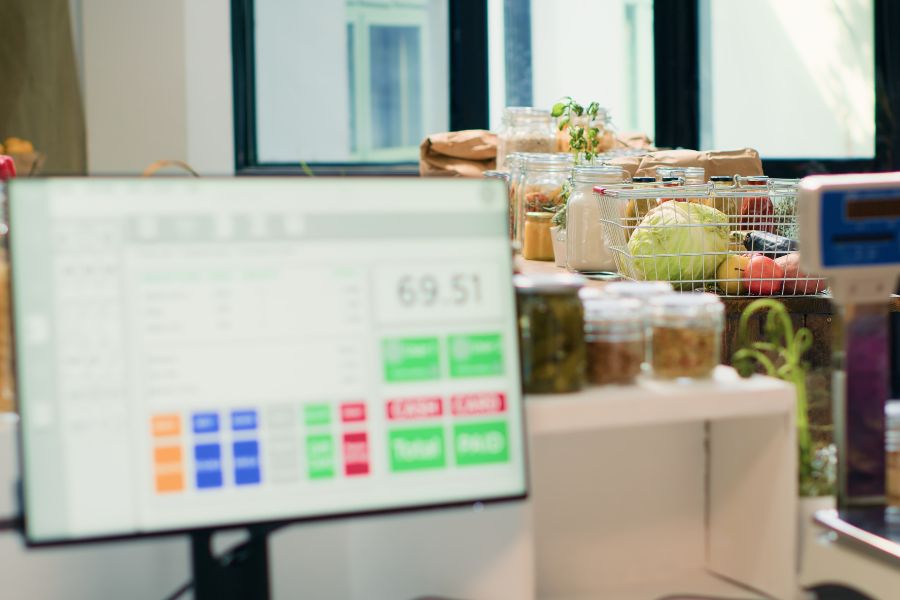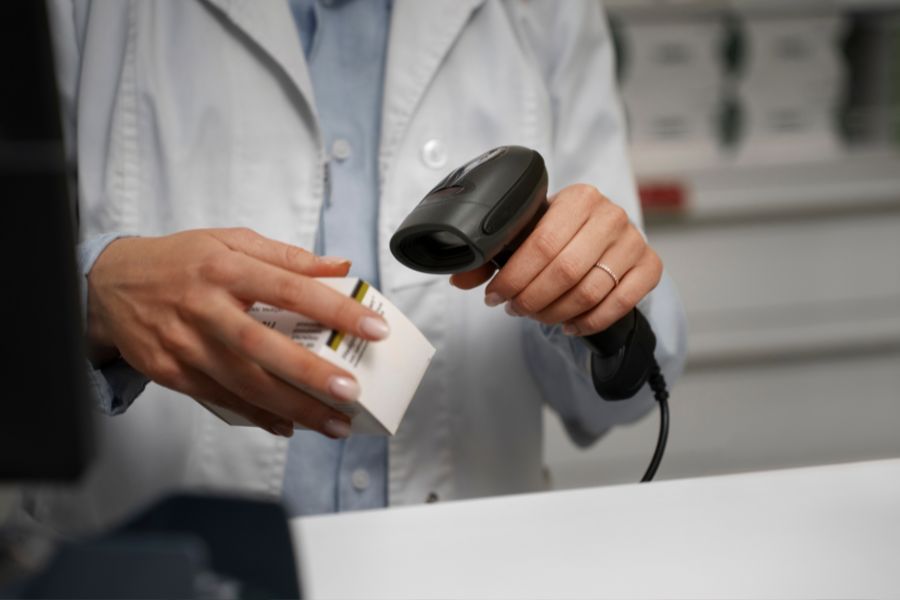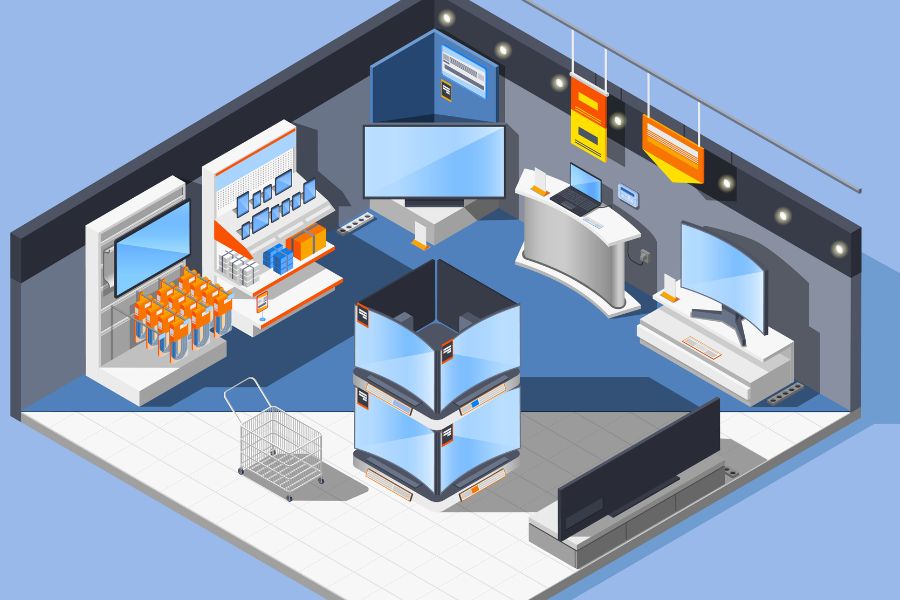In the retail world, data is everything—it’s a powerful tool that can shape decisions, drive strategies, and ultimately determine success. POS reports stand at the heart of this data-driven approach, offering a detailed look at your business’s lifeblood: sales, inventory, and customer interactions. With these reports, you gain more than numbers; you gain the insights needed to refine operations and boost profitability. Read on as we dissect POS reports, illustrating their importance and guiding you on how to leverage them to their full potential, propelling your business forward.
What is a POS report?
A POS report is a comprehensive collection of data that is generated by the Point of Sale (POS) system within a retail or hospitality business. It captures a wide array of information, from sales and inventory data to customer preferences and employee performance metrics. This report is the linchpin of business intelligence for a retailer, condensing various streams of transactional information into digestible, analytical insights.
With the digital transformation of retail operations, POS systems like ConnectPOS now generate real-time, dynamic dashboards that offer an at-a-glance view of a business’s health. They are customizable and can be tailored to the specific needs of a business, ensuring that the most relevant data is always at your fingertips. This real-time reporting capability allows for immediate responses to the ever-changing retail landscape, enabling businesses to act swiftly and decisively.
What do POS reports include?
POS reports encompass a range of detailed data sets that cater to different aspects of retail and hospitality operations. Below is an expanded view of the types of POS reports and the key metrics they track.
Sales reports
The backbone of performance tracking, sales reports provide a deep dive into revenue generation.
Key metrics include:
- Total Sales Revenue: A measure of total income from sales in a specific period.
- Sales by Item or Category: Breakdown of sales that helps identify which items or categories are top performers.
- Sales by Time Period: Analysis of sales data across different times, identifying peak sales windows.
- Sales Trends Over Time: Longitudinal data that reveal sales patterns and seasonal fluctuations.
- Average Transaction Value: Insight into the average spending per customer transaction.
- Discounts and Returns Processed: Tracking of sales deductions and items returned for a clear net sales figure.
Payment reports
These reports offer a lens into the financial interactions with customers.
Notable metrics include:
- Breakdown of Sales by Payment Type: Understanding which payment methods are most popular among customers.
- Total Revenue Per Payment Method: Measuring revenue intake categorized by each payment type.
- Refunds and Voids: Data on the frequency and reasons for transaction reversals.
- Payment Discrepancies: Identifying mismatches in expected versus actual payment amounts, crucial for loss prevention.
Employee reports
Employee reports provide actionable insights into workforce productivity.
They typically track:
- Sales Per Employee: Revenue attributed to individual staff members, highlighting top performers.
- Transactions Handled by Each Employee: A count of transactions managed by each staff member, indicating efficiency.
- Hours Worked and Labor Cost Analysis: Correlation of labor hours to sales performance for optimal staffing.
- Employee Productivity Metrics: Data on items sold or tasks completed per employee work hour.
Inventory reports
Keeping tabs on stock levels and product movement, inventory reports are essential for supply chain management.
They include:
- Current Stock Levels: Real-time data on available inventory.
- Rate of Inventory Turnover: How quickly stock is sold and replaced over a given period.
- Items Sold Versus Items Received: A comparison that helps in understanding sales velocity and restocking needs.
- Low Stock Alerts: Notifications when items are running low, helping prevent stockouts.
- Product Performance: Insights into best-sellers, slow-movers, and their impact on inventory.
Store reports
Store reports consolidate data across various facets of a single store or compare performance across multiple store locations. They are vital for understanding the overall health and efficiency of the retail space.
Key metrics in store reports include:
- Foot Traffic: The number of customers entering the store, which can be correlated with sales data to determine conversion rates.
- Sales by Location: Comparison of sales figures across different stores or within different departments of the same store, highlighting geographic and departmental strengths and weaknesses.
- Store Comparison: Benchmarks that compare stores against one another in terms of sales, customer satisfaction, and other performance indicators.
- Shrinkage: Data on inventory loss due to theft, damage, or error, which is crucial for loss prevention strategies.
- Operational Costs: Analysis of the costs associated with running a store, including utilities, rent, and supplies, to gauge overall profitability.
- Customer Flow: Patterns and trends in how customers move through the store, which can inform layout changes to improve the shopping experience and increase sales.
Customer reports
These reports focus on who your customers are and their buying behavior, with metrics such as:
- Customer Demographics: Data on customer age, gender, location, and more, for targeted marketing.
- Purchase History and Frequency: Tracking of individual customer purchases to understand buying habits.
- Customer Lifetime Value (CLV): The projected revenue a customer will generate during their relationship with your business.
- Loyalty Program Statistics: Engagement and utilization data for loyalty programs, important for customer retention strategies.
- Customer Feedback and Satisfaction Levels: Compiled data from surveys and feedback forms to gauge customer contentment and areas for service improvement.
Why are POS Reports Crucial for Businesses?
POS reports are crucial for decision-making in retail and hospitality, providing comprehensive benefits to the entire business and individual departments.
Comprehensive business benefits
These overarching advantages encapsulate how POS reports facilitate broad-spectrum strategic planning and operational excellence across the entire organization.
- Enlightened decision-making: With access to detailed performance data, businesses can make smarter, data-driven decisions that align with their strategic goals.
- Continuous performance monitoring: The ability to track and analyze sales, inventory, and employee productivity helps in identifying trends and making timely adjustments.
- Strategic business planning: Accurate historical data from POS reports inform future business projections, helping to set realistic targets and develop effective strategies.
- Enhanced customer understanding: Analyzing customer purchasing patterns and feedback provides valuable insights for improving service and increasing customer loyalty.
- Operational efficiency optimization: POS reports guide businesses in streamlining operations, reducing overheads, and optimizing workforce allocation to improve the bottom line.
Benefits for specific departments
Each department can extract specific benefits from POS reports, utilizing the data to excel in their respective areas of responsibility.
- Sales and marketing: These teams leverage sales data to understand consumer behavior, tailoring marketing campaigns that target the right customers at the right time.
- Inventory control: POS reports help inventory managers maintain the delicate balance of supply and demand, reducing the risk of stockouts or overstock situations.
- Financial management: Financial analysts rely on these reports to track revenue, manage expenses, and ensure fiscal responsibility throughout the business.
- Human resources: HR departments use POS data to gauge employee performance, streamline staffing, and manage payroll effectively.
- Operational planning: Store managers and operations teams apply insights from store reports to optimize store layouts, improve customer flow, and enhance the overall shopping experience.
Guide to Making The Most out of POS Reports
Leveraging POS reports effectively is critical for informed decision-making and strategic planning.
1. Understand the data
Grasp the full range of data your POS system provides. Train your team in interpreting various metrics such as sales by hour, inventory turnover rates, and customer retention numbers. A clear understanding ensures that you can make the most of the information at your disposal.
2. Customize reports for relevance
Work with your POS provider or in-house experts to tailor reports that focus on key performance indicators (KPIs) crucial to your business. For example, if customer retention is a priority, customize reports to track repeat customer purchases and loyalty program effectiveness.
3. Set a review schedule
Implement a routine for examining reports at different intervals. Daily reports might track sales and cash flow, weekly reports could monitor inventory and staffing, while monthly reports could focus on broader sales trends and revenue growth.
4. Analyze trends over time
Look beyond the daily numbers to identify long-term patterns. For instance, seasonal sales patterns can inform future inventory purchases, and understanding these trends can also guide promotional periods.
5. Benchmark against goals
Use POS data to set benchmarks for various aspects of your business, such as expected sales growth or inventory turnover rates. Regularly compare actual performance against these benchmarks to identify areas for improvement.
6. Turn data into action
Create an action plan based on your findings. If data shows a slump in sales at certain times, consider time-specific promotions to increase foot traffic. If certain items are frequently returned, investigate and address the underlying reasons.
7. Integrate customer feedback
Correlate POS sales data with customer feedback to gain insights into customer satisfaction. This dual-lens approach can inform product development and enhance service offerings.
8. Optimize inventory management
Use detailed inventory reports to predict demand more accurately, manage stock levels efficiently, and identify slow-moving items that may benefit from promotional efforts to free up shelf space and capital.
9. Keep technology updated
Ensure your team stays up-to-date on new software features and updates. ConnectPOS stays ahead by embracing advancements and offering improved analytics, reporting, and integration capabilities.
10. Act on the insights
Implement strategies based on POS analysis. For example, if the data shows a high volume of sales for a product, consider cross-selling complementary items to boost average transaction values.
By delving deeper into each of these practices, businesses can ensure that they not only collect valuable data from POS systems but also interpret and apply this data to make impactful decisions that drive success and growth.
Conclusion
In conclusion, effectively utilizing POS reports can transform data into actionable insights that drive business growth and operational efficiency. Throughout this article, we have explored the multifaceted benefits of leveraging these reports, from optimizing inventory management to enhancing customer satisfaction. By customizing reports, analyzing trends, and engaging with staff, businesses can strategically navigate the competitive landscape and stay ahead of the curve.
With advanced features tailored to support data-driven decisions, ConnectPOS offers a comprehensive solution for modern retail challenges. To further discover how CPOS can elevate your business, don’t hesitate to contact us today.
FAQ About POS Reports
- What is a POS report?
A POS report is a comprehensive summary generated by a Point of Sale system that captures vital data such as sales transactions, inventory levels, customer purchases, and employee performance. This information is crucial for business owners to track daily operations, understand customer behavior, and make informed decisions that can enhance business performance.
- How can POS reports improve decision-making in my business?
POS reports provide real-time data and analytics that help business owners identify trends, track progress toward sales targets, and pinpoint areas for cost reduction or improvement. This data-driven approach allows for more strategic decision-making, leading to better resource allocation, marketing strategies, and overall business efficiency.
- What types of POS reports are most essential for managing inventory?
Inventory management benefits from reports such as stock level reports, product performance reports, and low stock alerts. These reports help in maintaining optimal inventory levels, making informed purchasing decisions, and avoiding both overstock and stockouts.
- Can POS reports help in understanding customer preferences and behaviors?
Absolutely. POS systems can track customer purchases, allowing you to generate reports on buying patterns, product preferences, and peak shopping times. This information can inform product offerings, promotional activities, and loyalty programs tailored to your customers’ preferences.
- Is it difficult to set up and customize POS reports for my specific needs?
Many modern POS systems such as ConnectPOS are user-friendly and offer customizable reporting capabilities. While the initial setup may require some time to tailor the reports to your specific business needs, most systems come with customer support and tutorials to help you get the most out of your reporting features. Once set up, generating and interpreting these reports can become a seamless part of your business operations.
ConnectPOS is a all-in-one point of sale solution tailored to meet your eCommerce POS needs, streamline business operations, boost sales, and enhance customer experience in diverse industries. We offer custom POS with features, pricing, and plans to suit your unique business requirements.




